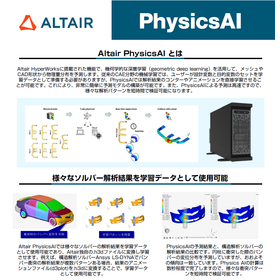The subject of analysis is a claw pole motor.
The claw pole motor is divided into the rotor and stator parts, each having a structure as shown in the figure. By incorporating the magnetization of the permanent magnets determined through pre-magnetization analysis, the rotor is rotated in an unloaded state to perform torque analysis. Although this is an analysis involving rotation, it can be conducted without regenerating the air mesh of the gap (the space between the rotor and stator) by using PHOTON's uniquely developed new slide interface. For more details, please download the catalog.
Inquire About This Product
basic information
**Features** ○ The chrome ball-shaped motor is divided into rotor and stator parts. ○ It incorporates the magnetization of permanent magnets determined by pre-magnetization analysis, → and performs torque analysis by rotating the rotor in an unloaded state. ○ Analysis involving rotation. ○ Using PHOTON's uniquely developed new slide interface, → analysis can be conducted without regenerating the air mesh of the gap (the space between the rotor and stator). ○ References: → CAE for Electrical and Electronic Equipment Using the Latest Finite Element Method Co-authored by Akikichi Ito and Junhyo Kawase Morikita Publishing Co., Ltd. ● For more details, please contact us or download the catalog.
Price information
Please contact us.
Delivery Time
※Please contact us.
Applications/Examples of results
For more details, please refer to the catalog or contact us.
catalog(1)
Download All CatalogsCompany information
At Photon, we are developing "electromagnetic field analysis software" that models and simulates products and components utilizing electromagnetic phenomena on a computer. In traditional design and development environments, the process has primarily revolved around trial and error through prototyping based on the experience of engineers and experiments with prototypes. However, conducting experiments using actual prototypes and analyzing the results requires significant time and cost. Moving forward, transitioning from an experimental and prototyping-based approach to an analysis-based design approach will be a crucial challenge for improving productivity, and establishing simulation technology as the core of analysis-based design techniques will be essential. In this context, Photon is developing and providing "analysis software" focusing on electromagnetic fields, as well as heat, vibration, and sound fields. By utilizing Photon's software, efficient development and design of various industrial products can be achieved. In this way, Photon aims to support users in reducing the number of prototypes, lowering development costs, and shortening development periods in their manufacturing environments, ultimately enhancing their competitiveness.


![[Analysis Case 12] Product Catalog for Cogging Torque Analysis of Claw Pole Motors](https://image.mono.ipros.com/public/catalog/image_generated/01/05a/223757/223757_IPROS6570725419836099645_1.jpg?w=120&h=170)


![[Analysis Case] Electric Field Analysis of MEMS Electrostatic Actuators (Electrostatic Force)](https://image.mono.ipros.com/public/product/image/c59/2000766432/IPROS49972045140855255963.png?w=280&h=280)


![[Case Study] Electromagnetic Wave Analysis of Waveguides Using Slide Interfaces](https://image.mono.ipros.com/public/product/image/d8b/2000060365/IPROS19979134950592281117.gif?w=280&h=280)



![SOLIDWORKS 2026 New Features Seminar [Free Participation]](https://image.mono.ipros.com/public/default/object/noimage_l.gif?w=280&h=280)